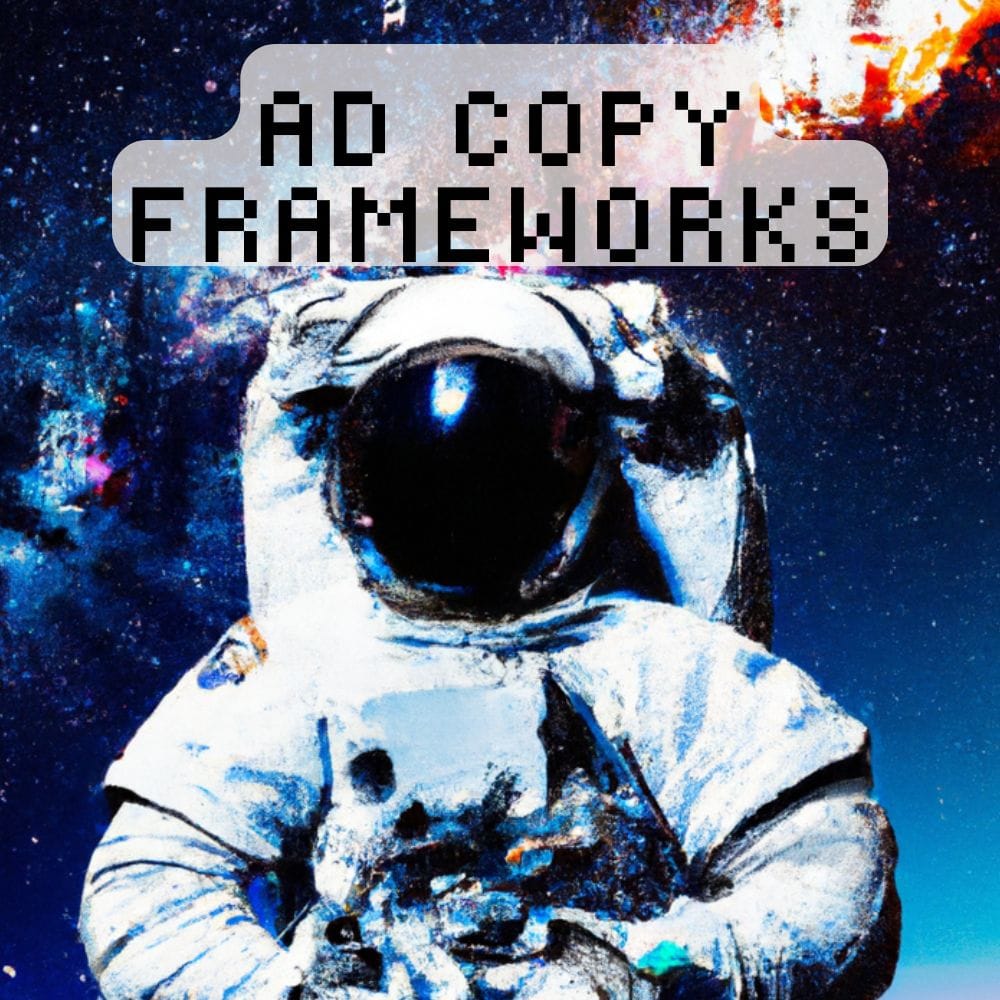Copy. Copy. Copy.
We all know ad copy matters, but how much?
Here’s a stat for you: 73% of people admit they only skim what you write, not read it. So, your ad copy needs to grab attention fast.
Recently, I analyzed over 100 DTC brands to find the best ad copywriting frameworks.
Here are my seven favorites that can help you get results:
1. The Feature + Benefit + Guarantee Framework
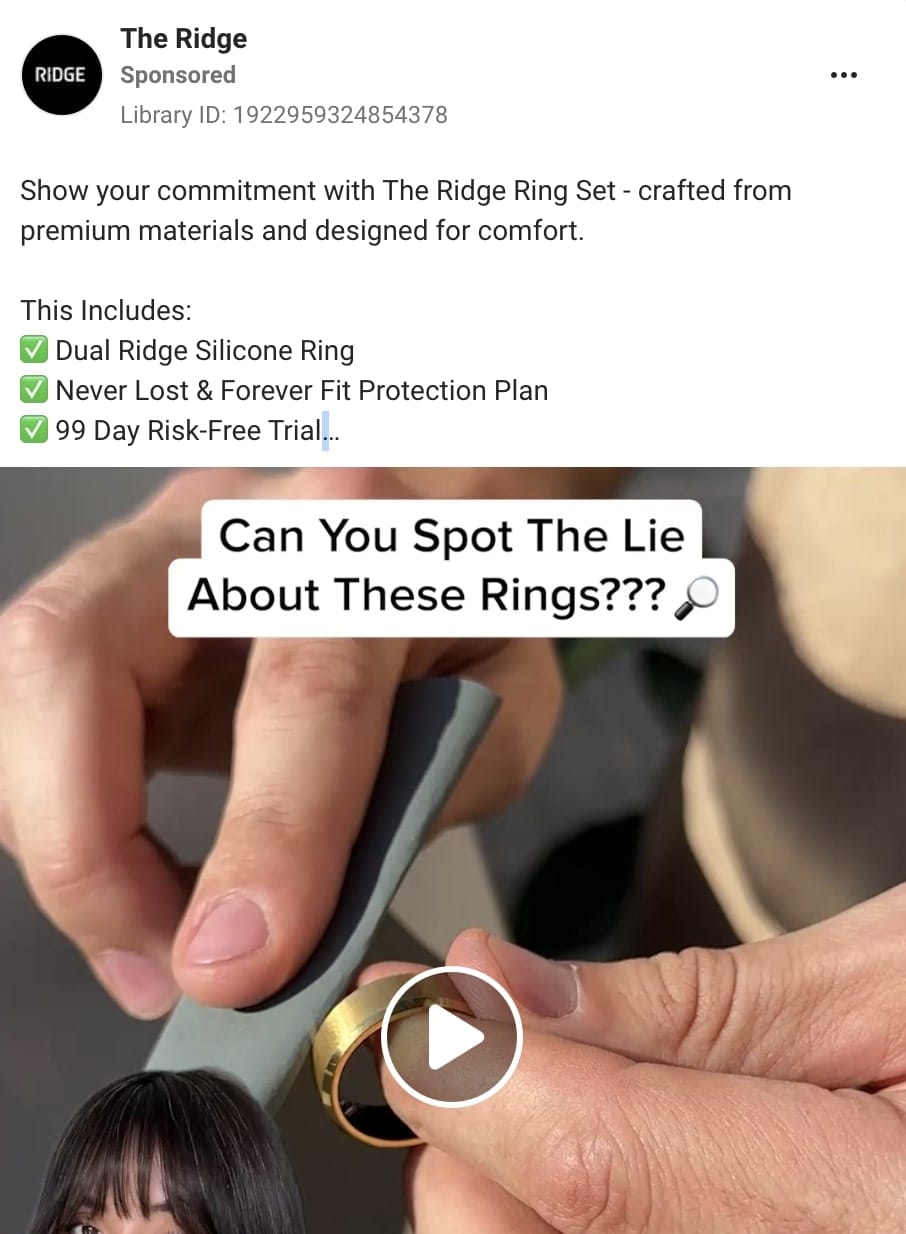
Copy structure:
- Statement highlighting the product’s standout feature (e.g., material, design)
- Checkmark with benefit 1 (durability, comfort, or functionality)
- Checkmark with benefit 2 (customization or personalization options)
- Checkmark with benefit 3 (lifetime guarantee or risk-free trial)
- Call to action with FOMO or limited-time offer (optional)
2. The Testimonial + Simplicity + Emotional Appeal Framework
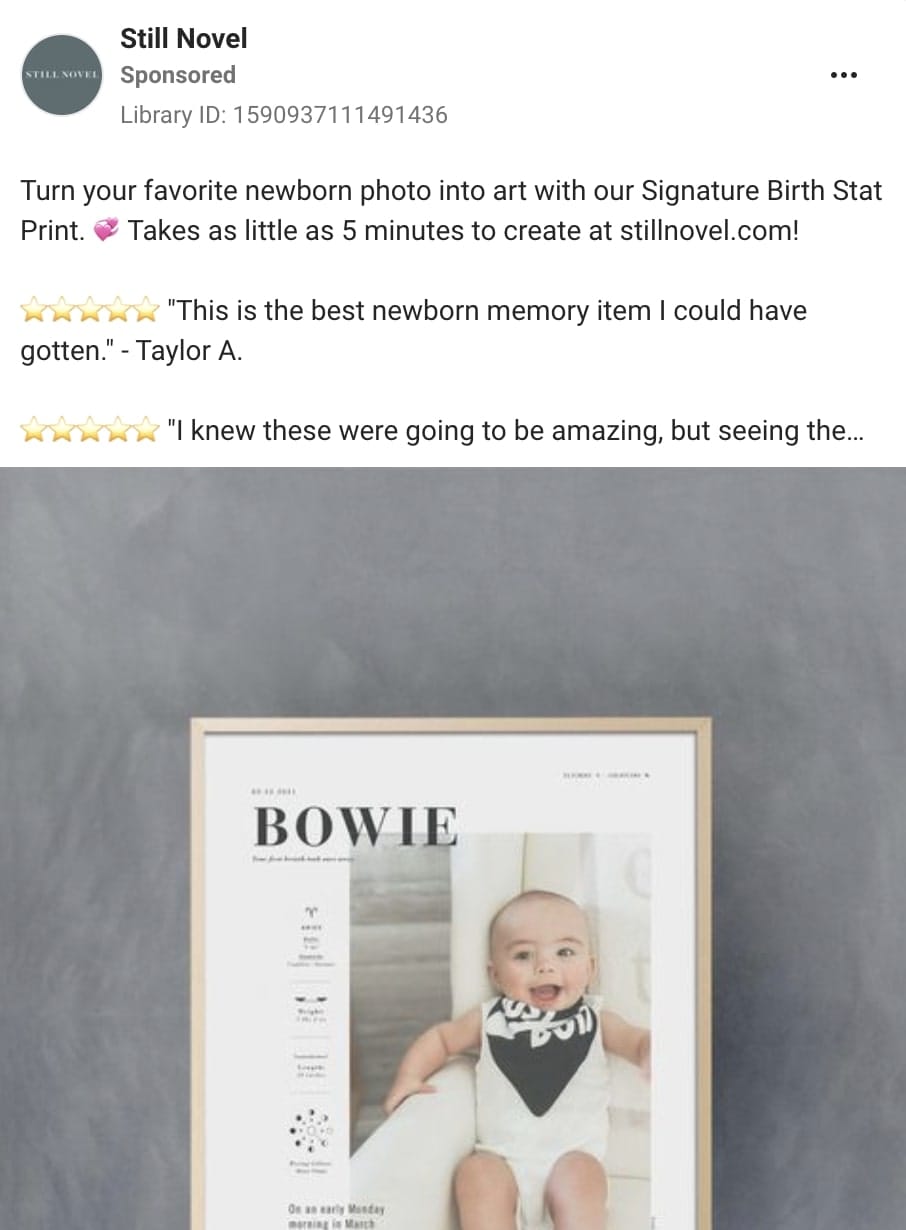
Copy structure:
- Emotional hook highlighting the significance of the product (e.g., preserving memories, special moments)
- Simple, straightforward statement about how easy or quick it is to use/create
- Call to action emphasizing ease or immediacy (e.g., “Takes just minutes!”)
- Customer testimonial with star rating to reinforce the emotional impact or satisfaction.
3. The Offer + Features + Social Proof Framework
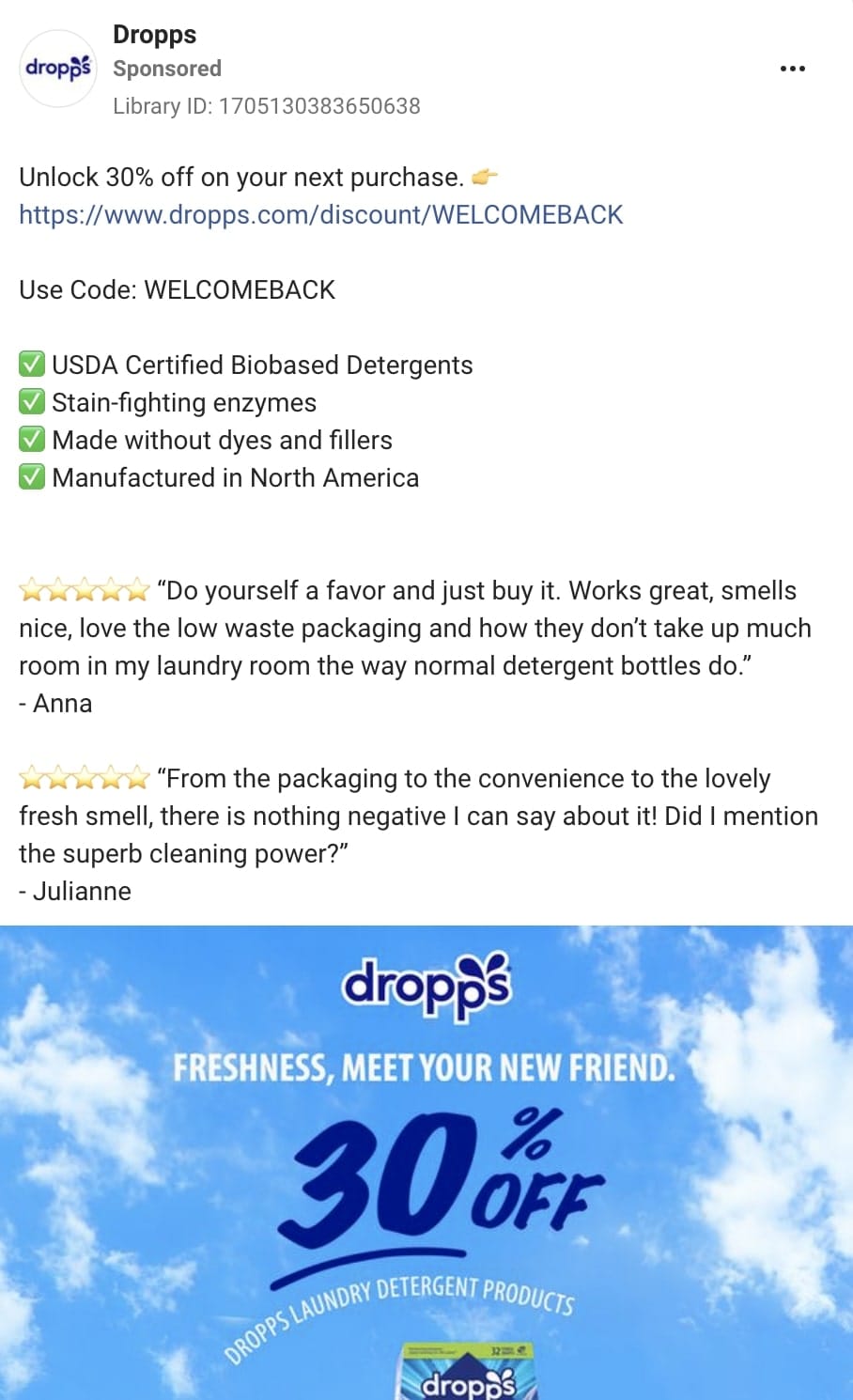
Copy structure:
- Start with a clear offer or discount (e.g., "Unlock 30% off your next purchase")
- Highlight the key product feature (e.g., eco-friendly, USDA certified)
- Briefly mention one or two supporting features (e.g., stain-fighting, no fillers)
- End with social proof (e.g., a positive customer review or rating)
4. The Problem + Solution + CTA Framework
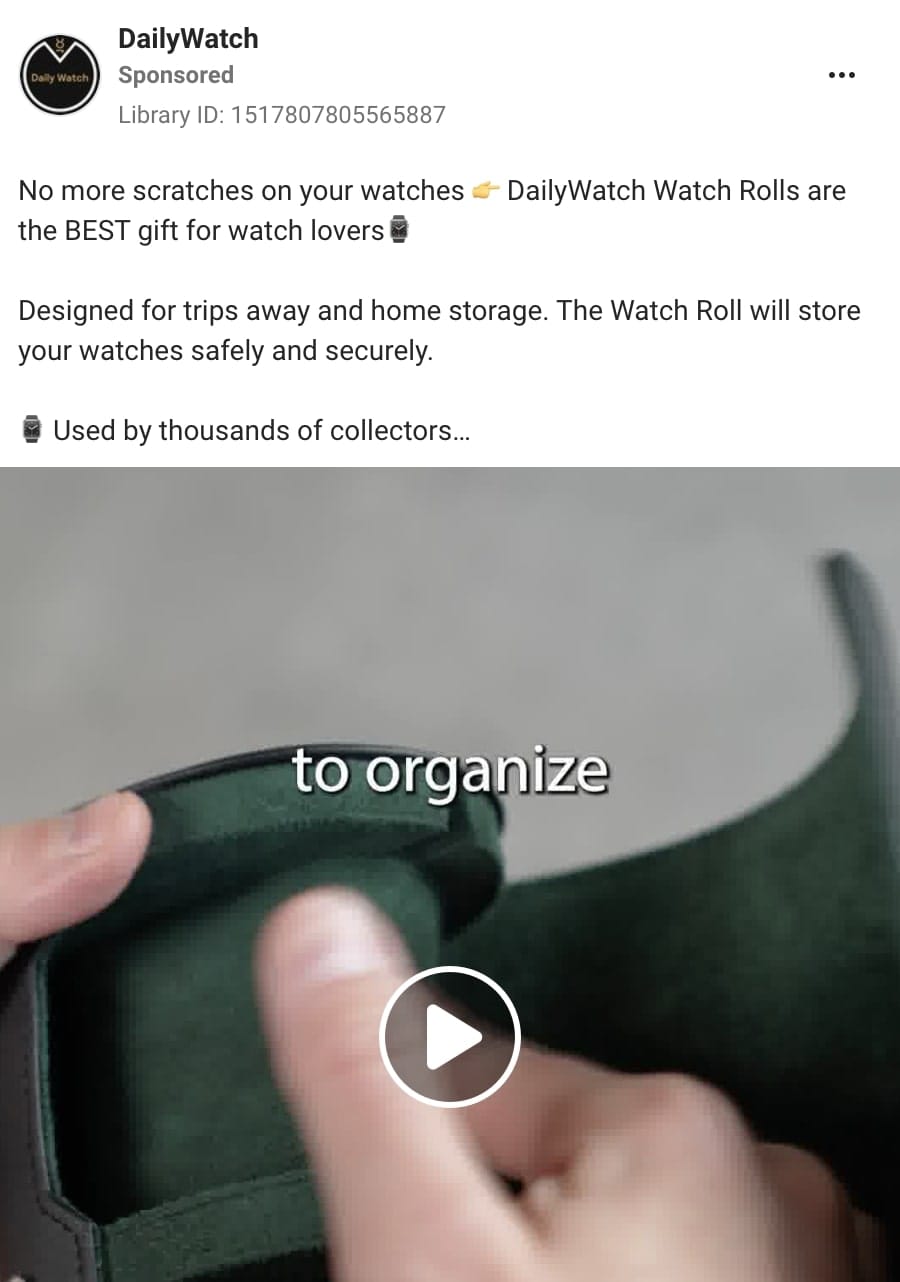
Copy structure:
- Introduce the problem (e.g., “Tired of scratches on your watches?”)
- Present the solution (e.g., “Our Watch Rolls keep them safe and secure”)
- End with urgency and call to action (e.g., “Get yours today before they’re gone!”)
5. The Question+Solution Framework
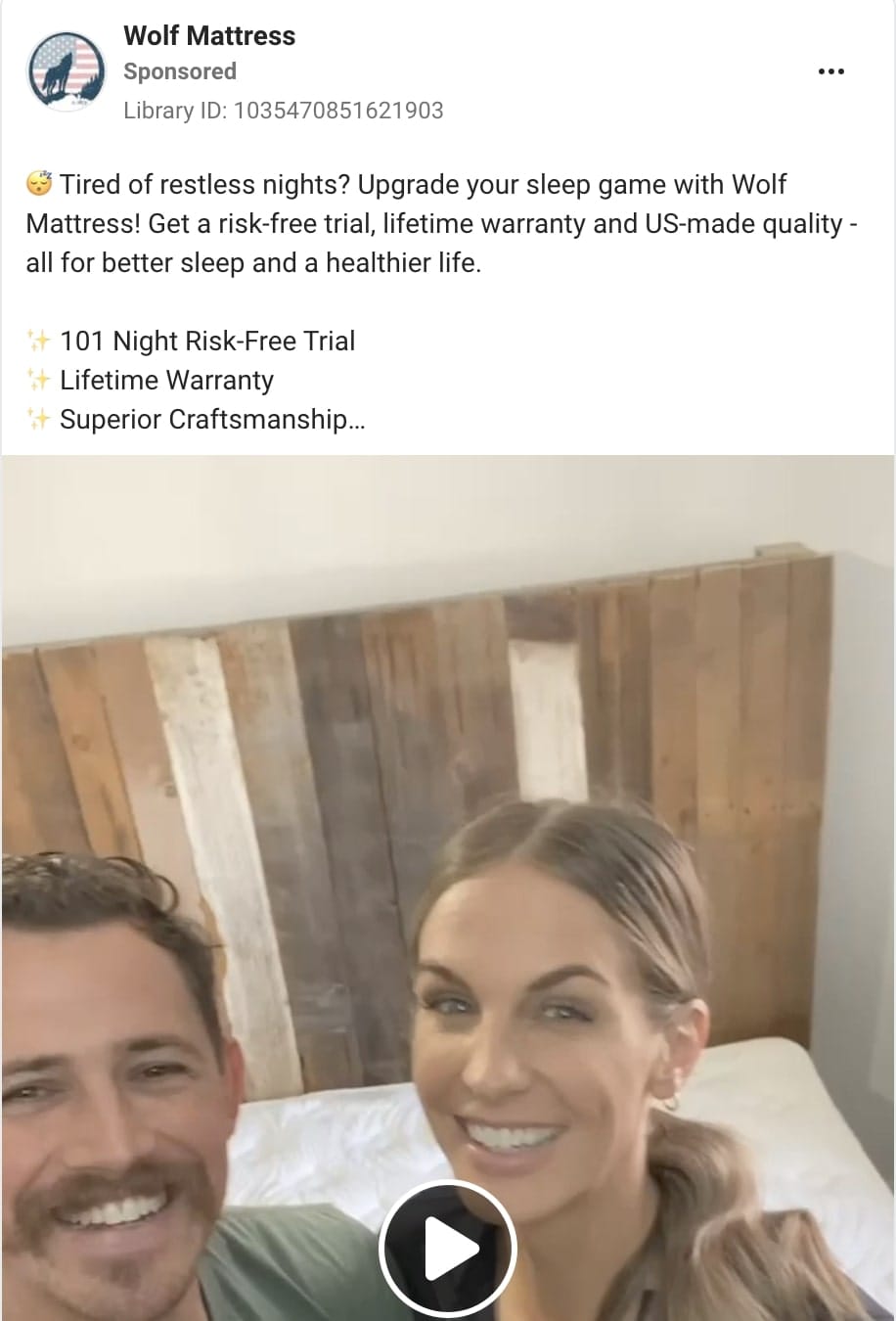
Copy structure:
- Start with a question addressing the problem (e.g., "Tired of restless nights?")
- Offer the solution with key features (e.g., "Upgrade to Wolf Mattress – 101 Night Risk-Free Trial, Lifetime Warranty, and Superior Craftsmanship")
- End with a clear call to action (e.g., "Experience better sleep today!")
5. Pain Point + Solution + Audience-Focus Framework
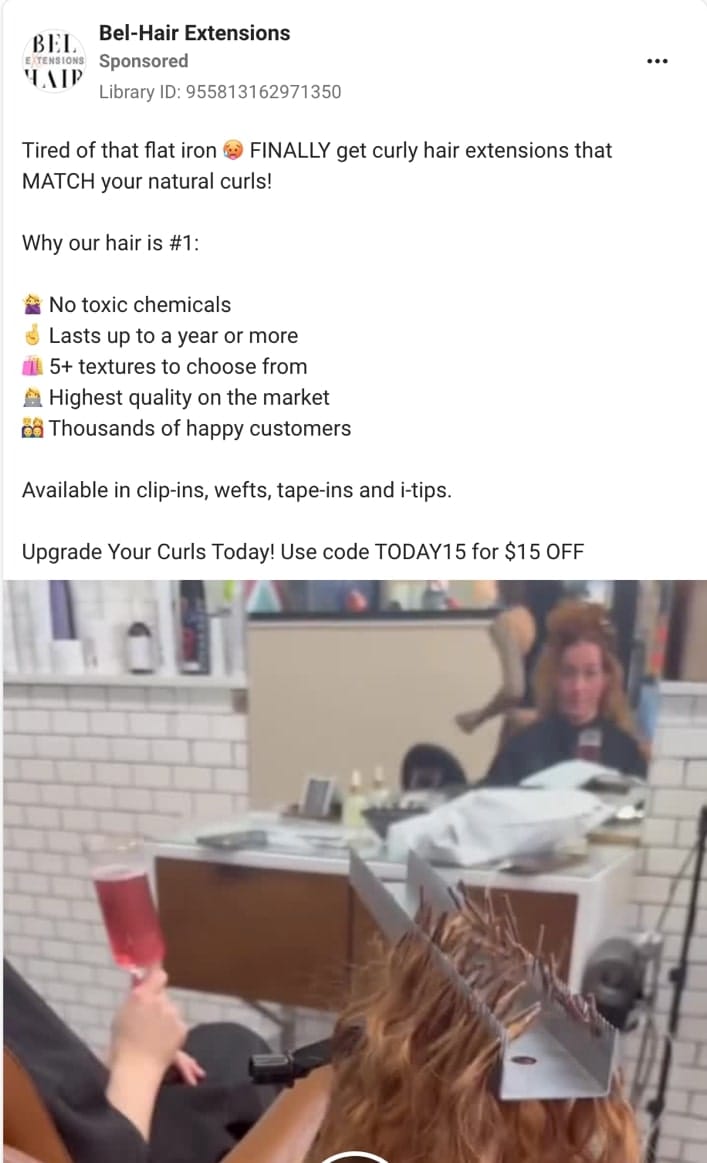
Copy structure:
- Start with a pain point that resonates with the audience (e.g., "Tired of that flat iron? 🥵")
- Present the solution (e.g., "FINALLY get curly hair extensions that match your natural curls!")
- Use emojis to highlight features that the audience can relate to (e.g., "🙅♀️ No toxic chemicals, 🤞 Lasts up to a year, etc.)
- End with a relatable call to action and offer (e.g., "Upgrade Your Curls Today! Use code TODAY15 for $15 OFF")
6. Humor + Emotion + Closing Statement Framework

Copy structure:
- Start with humor or playful language to hook the reader (e.g., "The Friar Tuck is a flat plate BBQ powerhouse designed for HEAVY workloads! 🔥")
- Evoke emotion by highlighting the fantasy or experience (e.g., "Warming Rack Add-on that can keep the food you've cooked warm by keeping it 'Tucked' under the BBQ - pun intended")
- Close with a compelling statement (e.g., "Hence making it a popular option for schools, football clubs, and backyards! ⚽️🥩.")
7. Attention Grabber + Solution + Product Hook Framework
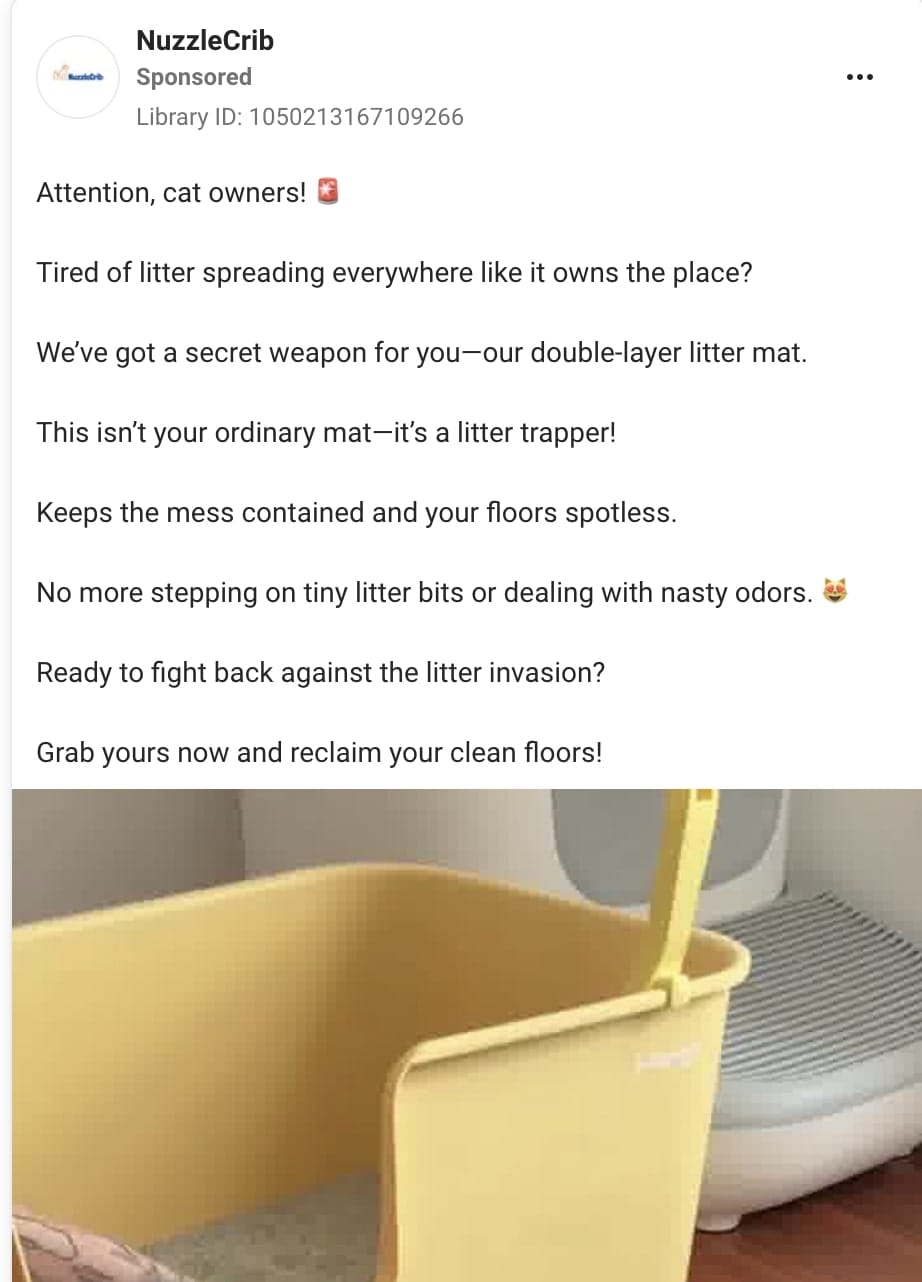
Copy structure:
- Start with an attention-grabbing statement (e.g., "Attention, cat owners! 🚨")
- Present the solution (e.g., "Tired of litter spreading everywhere? We’ve got the perfect fix—our double-layer litter mat.")
- Hook them with a unique product feature (e.g., "This isn’t just a mat—it’s a litter trapper!")
Bonus Tips: My Best Practices for Writing Scroll-Stopping Ad Copy
The above frameworks are designed to improve your ad copy, but I also wanted to give you extra best practices to help make your ads even more effective:
Be Clear, Not Clever
Make sure your audience instantly knows what you’re offering. Instead of “Book now,” say “Book a free personal training session” so there’s no confusion.
Start with a Question to Hook Readers
Questions create curiosity. “Struggling to stay fit at home?” makes people want to read on to find out how you can help.
Cut Unnecessary Words
Keep it short. A simple “Lasts up to a year” is more effective than a long explanation about durability.
Focus on Benefits, Not Just Features
Explain what the audience gains. Instead of “Made from 100% cotton,” say “Stay cool and comfortable all day long.” It’s what they care about most.
Always Include a Call to Action
Don’t assume the audience knows what to do. Be clear with “Sign up today” or “Get 20% off now” to guide them to take action.
Ready to Create Better Ad Copy?
Now it’s time to put these frameworks and tips into action.
Apply them to your ads, fine-tune your messaging, and watch your ads start to drive real engagement and better performance.
With a bit of experimentation and testing, you should soon be able to identify winning copy strategies for your campaigns.


